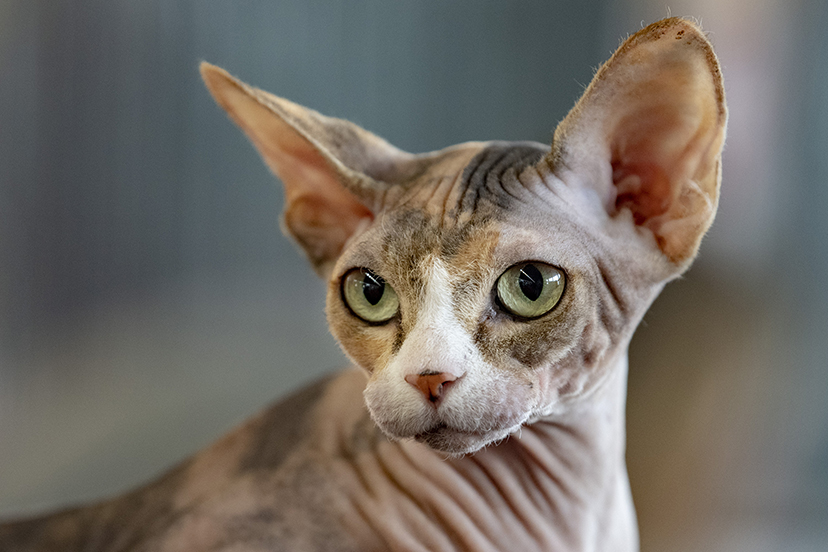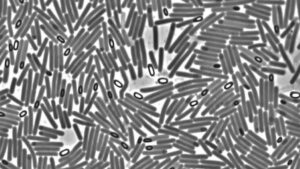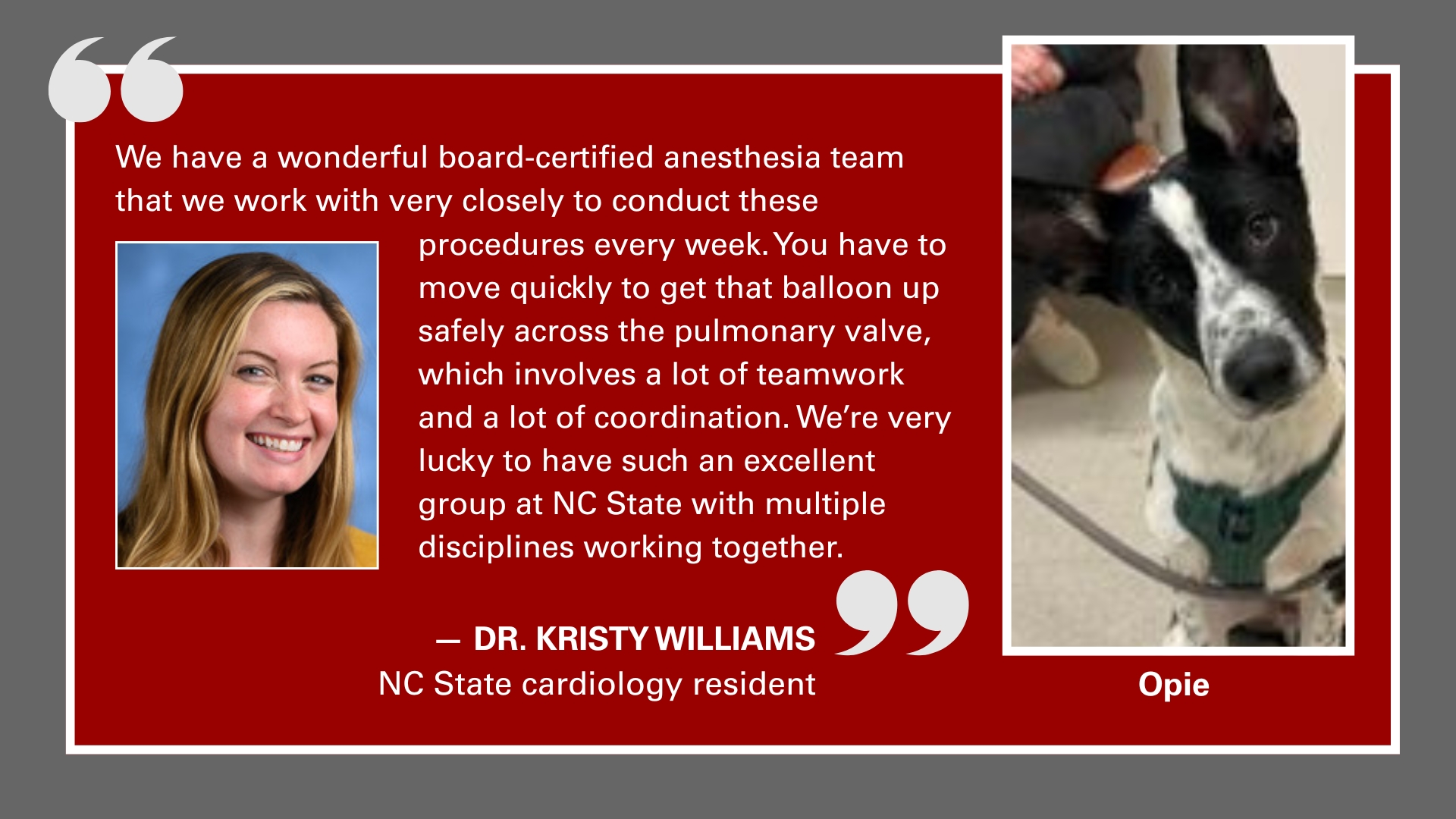NC State Veterinary Medicine Research Roundup, March 2021

A look at some of the latest published research from the CVM.
Genetic Mutations and Feline Cardiomyopathy
Researchers have discovered a novel form of cardiomyopathy associated with the ALMS1 gene in a cat. The findings suggest that variants in genes involved with cardiac development and cell regulation may deserve further consideration for association with familial hypertrophic cardiomyopathy.
Familial hypertrophic cardiomyopathy is a common inherited cardiovascular disorder in people, and while many causal mutations have been identified, about 40% of cases do not have a known causative mutation. The study outlines the association of familial hypertrophic cardiomyopathy in sphynx cats with a novel ALMS1 mutation.
ALMS1 is a large gene that encodes for ubiquitously expressed protein. Mutations in the ALMS1 gene are associated with the development of Alström syndrome, a multisystem familiar disease that can include cardiomyopathy, a heart muscle disease that makes pumping blood to the rest of the body difficult.
Study authors include Kathryn Meurs, Sandra Tou, Teresa DeFrancesco and Bruce Keene. The Orphanet Journal of Rare Diseases published the research.
Read the study here.
Treating Canine Seizures 
A study has found that the medication midazolam delivered by continuous rate infusion (CRI) is safe and may be an effective way to treat dogs with cluster seizures or status epilepticus, single seizures lasting more than five minutes or two or more seizures within a five-minute period.
Researchers performed a retrospective review of medical records of 106 dogs with the two conditions treated with midazolam CRI, a sedative traditionally used to help patients feel either relaxed or sleepy before medical procedures. Seizure control was achieved in 77.4% of the dogs overall, in 85% with idiopathic epilepsy, 74% with structural epilepsy and 75% with unknown epilepsy.
Study authors include Christopher Mariani, Natasha Olby, Karen Muñana, Peter Early and Kathryn Bray. The Journal of Veterinary Internal Medicine published the research.
Read the study here.
Epithelial Regeneration After Doxorubicin
New research sheds light on the cellular origin of epithelial regeneration after the use of the chemotherapeutic doxorubicin (DXR).
Researchers monitored DXR’s effect on active intestinal stem cells (aISCs), finding that DXR effectively depleted aISCs in the small intestine and that subsequent epithelial regeneration depended on nonquiescent early progeny cells of aISCs. Researchers note that the chemo-resistant phenotype of early progeny cells may rely on a dampened DNA damage response (DDR) in contrast to aISC’s robust DDR.
While regeneration after aISC depletion has primarily been explored in irradiation, the cellular origin of post-DXR epithelial regeneration after DXR is poorly understood.
The study, published in Cellular and Molecular Gastroenterology and Hepatology, has co-authors including Christopher Dekaney and Breanna Sheahan.
Read the study here.
Gut Microbiota and Impact on C. difficile Infection

Through isolating and characterizing strains of Clostridioides difficile from different animal species, a new study is among just a few looking at risk factors associated with C. difficile carriage and the role of the host microbiota.
Intestinal carriage of toxigenic and non-toxigenic C. difficile strains, with and without clinical signs, is reported in animals. Researchers isolated strains predominantly from dogs, cats and horses.
Among the findings: C difficile results in a shift in fecal microbial community structure in both canines and equines, and commensal Clostridium hiranonis is negatively associated with C. difficile in canines. Researchers showed a clear antagonistic relationship between the two strains in vitro. That suggests that commensal Clostridia might play a role in colonization resistance against C. difficile in different hosts.
Study authors include Casey Theriot, Benjamin Callahan and Megan Jacob. Anaerobe published the research.
Read the study here.
Evaluating Canine UBV
A 3D ultrasound device is an accurate and rapid point-of-care tool for measuring canine urinary bladder volume in dogs, providing a noninvasive method to estimate UBV in real time, according to a new study.
Urine volume quantification can provide important clinical information, including noninvasive urine output estimation, although point-of-care urinary bladder volume assessments are not routinely performed.
Ten dogs were used in the prospective, experimental study using various 2D and 3D methods. The study, published in the Journal of Veterinary Internal Medicine, is authored by Shelly Vaden, Adam Birkenheuer, Crystal Lindaberry, Zachary Kern, Erin Keenihan and Allison Kendall.
Read the study here.
Immunomodulatory Properties of Mesenchymal Stem Cells

Culture expansion affects some of the immunomodulatory properties of equine bone marrow-derived mesenchymal stem cells (BM-MSCs) in vitro, according to a new study with authors including Lauren Schnabel and Alix Berglund.
The findings suggest that MSCs isolated from single collection of bone marrow may be culture expanded, but only those from lower passage numbers would be ideal for clinical application. The immunomodulatory properties of MSCs have been studied extensively due to their increasing clinical application for tissue regeneration and repair following culture expansion.
Veterinary Immunology and Immunopathology published the research. Read the study here.
Monitoring Canine Leishmaniasis
A survey of cases of dogs in the United States and Canada with the parasitic disease leishmaniasis over a 13-year period finds that surveillance should be considered for dogs returning from Leishmania infantum-endemic regions in order to monitor emergence of the zoonotic disease.
Researchers examined demographics and travel history of L. infantum-infected dogs in the U.S. and Canada from 2006 to 2019. Infections are reported in foxhounds in the regions, but only rarely in other dog breeds.
The majority of the L. infantum cases were detected in non-foxhounds, many of which had traveled to L. infantum-endemic countries, with several non-foxhound breeds having no travel history. Dogs are considered a major reservoir host for human Leishmania infections, transmitted by sandflies and associated with poor housing and unsanitary conditions.
The Journal of Veterinary Internal Medicine published the research. Study authors are Barbara Qurollo, Ed Breitschwerdt, James Wilson, Erin Lashnits and Taylor Gin.
Read the study here.
Sedation of Ferrets for Veterinary Care 
Intramuscular drugs alfaxalone and butorphanol provide clinically useful sedation in ferrets without impactful cardiorespiratory effects, according to a new study authored by Julie Balko, Lysa Posner and Matthew Milloway.
Veterinary care of ferrets often requires chemical restraint. The Journal of Zoo and Wildlife Medicine published the research.
Read the study here.
~Jordan Bartel/NC State Veterinary Medicine


